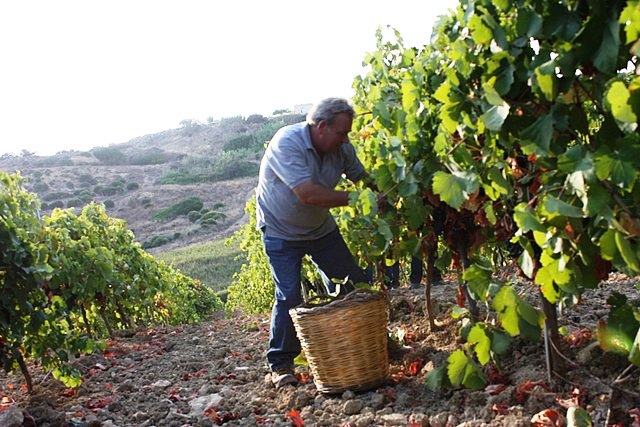
Among the many exquisite treasures of the island of Sicily has to be the Nero D’Avola grape. This indigenous varietal forms part of a rich tapestry of winemaking history stretching back 3000 years.
The award-winning wine writer Fiona Beckett in a piece for The Guardian (UK) wrote: “If Nero D’Avola isn’t on your radar, it should be.” Those who are fans of the wines of Sicily will know that the Nero d’Avola is the most widely planted red wine grape variety on the island. Nero D’Avola, translated as “Black of Avola”, is a reference to the dark skin of the grape and its link to the southeast coastal town and municipality of Avola in the province of Syracusa. Since the Middle Ages the grape has been cultivated in the flat land and low hills around the town that was a major trading centre with the mainland. The red wine produced by the varietal itself became a key trading commodity as it has been used to give colour and body to “lesser” wines on the mainland for centuries and now beyond. The grape variety came to be planted well beyond the province and Nero d’Avola has an alternative name of Calabrese, meaning “Of Calabria”, suggesting it is linked with the mainland region of Italy. The intriguing origin of this variety is expertly explored in the authoritative Wine Grapes (2012) by Jancis Robinson, Julia Harding, and José Vouillamoz.
In an article for the Mail on Sunday, wine expert Olly Smith writing on Sicilian winemaking commented: “The biggest red star is Nero D’Avola, by turns suave and fruity or butch and savoury.” The grape is often compared with Shiraz in the New World due to the sweet tannins and plum or peppery flavours that Nero D’Avola wines characteristically offer. The varietal produces dense and dark wine when aged in oak barrels but also makes highly appealing young, fresh vino. Nero D’Avola wines are also shaped by the various microclimates and geological conditions of the island. It is interesting to note Nero D’Avola is one of the Southern Italian grape varieties that have been increasingly attracting the attention of vineyards cultivating vines in warm to hot conditions such as Australia. This interest is set to continue as grape growers and winemakers, mindful of the impact of climate change upon weather patterns, look to versatile grape varieties from warmer regions such as the South if Italy rather than those cultivated in cooler locations further north in Europe.

grape of Sicily.
A rising generation of winemakers in Sicily are injecting new life into the indigenous grapes of the island. Sicily has seen the rise of organic viticulture, improvements to vineyard site selection and careful winemaking to raise wine quality. The Nero d’Avola is also being blended with other grapes, including the Shiraz, Cabernet Sauvignon and Merlo with some splendid results.
Davy’s Wine Merchants have an ideal wine for anyone wanting to begin exploring the classic Sicilian grape and report: “We are happy to recommend 2019 Nero D’Avola Rupe Secca.” This intense, smooth wine is full of ripe red berry aromas and flavours. Rupa Secca, a recently established company, is praised by Davy’s Wine Merchants for offering great value wine sourced from Italy’s classic regions. The distinguished, independent wine merchant says: “This is a sexy wine with plenty of ripe red berry fruits and is smooth on the palate.” In terms of food pairing, Davy’s suggests: “It is delicious on its own, it also goes well with chocolate and fruity desserts.”
Nero D’Avola wines are the perfect place to start a journey to discover the indigenous grapes of Sicily. It may even lead you to visit the Mediterranean’s largest island as well…
Davy’s Wine Merchants are running a Valentine’s Day promotion from 2 to 14 February 2021 for 2019 Nero D’Avola Rupe Secca. Was £9.50 now £7.95.
Image (top): Harvesting grapes by hand on rocky soil in Sicily. (Credit: Fabio Ingrosso)










